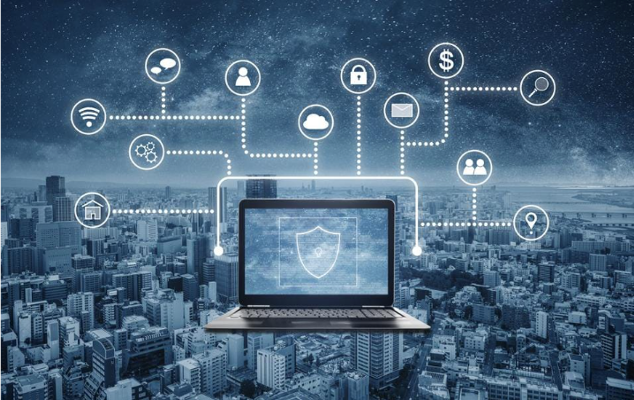Three Trends Driving the Demand for Unified Endpoint Security
The Endpoint Protection Platform (EPP) market is changing faster than ever before. As Gartner discusses in its report, The Long-Term Evolution of Endpoints Will Reshape Enterprise Security: “Endpoints are becoming digital consumer experience enablers that are more tightly controlled and natively fortified against attacks. Security and risk management leaders must design long-term security and investment strategies that align with this technology trend.”
As endpoint visibility, IT resilience and team accountability become more crucial in a distributed workforce, Unified Endpoint Security (UES) – the process of securing and fortifying endpoints from a unified platform – is a natural progression. It helps organizations better control the full stack of security operations and enrich the data used for correlating activities between endpoints and other data sources. Three trends in particular necessitate a UES solution to help keep an enterprise secure, both today and tomorrow.
Three Major Trends Challenging Businesses Today
- BYOD infiltration
COVID-19 showed global organizations how vulnerable their existing security measures were when the world stayed home. Those vulnerabilities were exacerbated by employees moving to a distributed workforce, in many cases now using the same devices for personal and professional use. The security measures go beyond the struggle of securing a distributed workforce, but involve devices that could compromise security if personal use encroaches on professional usage. Not only has the edge gotten bigger; the total size of the network is also compounded by the number of BYOD devices each employee has (usually two, but sometimes more). These devices are now operating in the wild, on home networks that have much lower protection than corporate networks. The result? Organizations are realizing that a Zero Trust approach is needed to verify the large number of remote endpoints and secure their data, applications and the endpoint itself. With ample threat factors lurking, it’s no wonder that detecting personal devices has become IT leader’s #1 concern since the pandemic hit.
- Tool sprawl is real
Managing tens of thousands – or hundreds of thousands – of devices amidst global regulations is no easy feat for an IT team. Organizational teams often working in silos select their own tools to get the job done to their own preferences and specifications. As a result, many tools exist within a single organization attempting to do similar or competing jobs. How many? The average organization uses 43 tools for IT operations and security. Unsurprisingly, this results in an inefficient use of budget and IT resources and, most concerning of all, still leaves large visibility, accountability and resilience gaps in an organization that result in avoidable vulnerability. It seems ironic that the very tools put in place to secure an organization’s endpoints are the very same reasons weaknesses are caused.
- Cyberattacks are becoming more frequent and sophisticated
Over the past decade, cyberattacks have not only become more frequent, they have also become more sophisticated – to the extent that organizations are no longer preparing for what to do if they get breached, but what to do when they get breached. Add years of poor IT hygiene, unnecessarily complex IT environments, siloed IT ops and security teams and a rapidly distributed workforce, and it comes as no surprise that 98% of IT leaders reported increased security challenges. Over 90% of IT leaders also reported an increase in cyberattacks within the first two months of the pandemic. It’s obvious that organizations need to regain visibility and control to reduce their attack surface while simultaneously detecting and responding to incidents before they become enterprise-wide breaches.
Can There Be One Solution To Secure Them All?
Combining risk management, security hygiene, endpoint protection, detection and response, and asset management solutions into a single platform becomes more compelling every day. Imagine the increases in efficiency and productivity – not to mention the reduced infrastructure complexity and cost savings – if your organization’s IT ops and security teams could use a single platform to:
- Identify connected devices
- Help ensure managed endpoints are always up-to-date with the latest operating system patches and applications
- Measure and make prioritized risk-based decisions
- Reduce the attack surface through the deployment and configuration of endpoint protection controls like antivirus, application whitelisting and blacklisting, host firewall or disk encryption
- Detect, respond to and remediate incidents before they become breaches or outages
Such a unified platform could truly mitigate the root cause of endpoint security problems. These capabilities are crucial to ensuring business continuity and resilience, even more so now after organizations had to rapidly move to a distributed workforce within days. With already limited IT resources further constrained, it is becoming clear that a plethora of point solutions is impossible to manage and control. Additionally, organizations are realizing that existing gaps in visibility, accountability and resilience between IT ops and security are exacerbated due to the pandemic, exposing their business to unnecessary risk: to combat this, 48% of IT leaders are already saying they are investing in new endpoint management tools.
The Evolution to UES Is Inevitable
These trends are only the beginning. With the business world changed forever, remote work – and thus, BYOD and Zero Trust – will be here to stay, cybercriminals and nation states will continue to go to town targeting work-from-home employees, and organizations will continue to try and reduce their attacks surface by consolidating their IT environment and point solutions. The multitude of best-of-breed point solutions and one-dimensional endpoint protection is no longer viable in this ‘new normal.’ A new approach to endpoint protection is needed and we believe that the future will inevitably lead to Unified Endpoint Security.
Tanium is already there.
Get a free Cyber Hygiene Assessment
Interested in seeing Tanium in action? Schedule a one-to-one demo or talk to our Tanium experts at our upcoming events.



